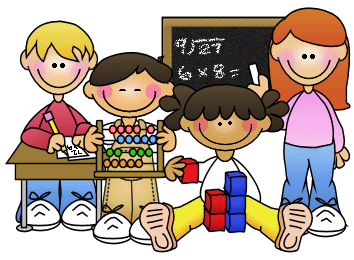The NETS-S have six components: 1. Creativity
and Innovation, 2. Communication and Collaboration, 3. Research and Information
Fluency, 4. Critical Thinking, Problem Solving, and Decision Making, 5. Digital
Citizenship, and 6. Technology Operations and Concepts. Saying so through many Web 2.0 applications, students can meet the NETS-S requirements and apply their skills in 21st century learning. How and what tools can they use to satisfy these needs?
Communication (NETS-S Component 2, 6)
Communication is a very powerful skill that students must need presently and for the future in order to succeed. Not only do students need to know how to communicate with each other physically, they need to know how to communicate through print effectively as well. To help students communicate effectively, they can use Web 2.0 applications such as: Prezi, Edmodo, Diigo, Skype, Podcasts, e-mail, chats, blogs, Google Docs, VoiceThread, and social networks. This can help them communicate with other students, professionals, relatives, or teachers not only locally, but globally. It can also help group members collaborate with each other virtually. Most of our students now are digital natives, and know how to use and implement many of these tools already, so why not have them use the tools they are experts in.
Collaboration (NETS-S Component 2, 4, 6)
Collaboration to no doubt goes hand and hand with communication skills, because in order to collaborate successfully, students must know how to communicate effectively. Some Web 2.0 tools that students can use to collaborate are: Google Docs, Google+, Skype, Wikis, Edmodo, VoiceThread, blogs, and social networks.
Publishing (NETS-S Component 1-6)
Publishing is the way in which students distribute their products for others to view. Publishing not only lets students show off their work, but enables them to be creative as well. Creativity is far the most important skill that students seem to not pracitce, because they are not given the oppurtunity to show their true colors in many classrooms, and thus lack this skill in the future. Web 2.0 applications that students can use to publish their work are: Prezi, GlogsterEDU, Blogger, Google Docs, VoiceThread, Wikis, Animoto, and SlideShare.
Refrences
International Society for Technology in Education. (2007). NETS Student Standards. Retrieved from: http://www.iste.org/standards/nets-for-students/nets-student-standards-2007.aspx.
About Me

- Sara E. Perez
- Hidalgo, Texas, United States
- 24/7/365 Educator! I really love what I do and love to implement technology as much as I can, to meet the needs of my digital native students. I consider myself a teekducator (technology geek+educator) and like to take advantage of Web2.0. I'm an Instructional Media Masters Graduate from Wilkes University and am currently finalizing my Principalship from Lamar University! I'm a 5th Grade teacher @ Valley View 5th Grade Campus, this is my fifth year teaching! =)
Sunday, July 31, 2011
Wednesday, July 27, 2011
Our Solar System
Here is the video my class created using Blabberize, Audacity, and Movie Maker. Enjoy =)
Sunday, July 3, 2011
(u01a1) Blog - PBL
The three PBL examples viewed this week all shared common aspects. First, it is to no doubt that the PBLs in each class were well prepared and organized by the teacher. Because of this well organization, the PBLs were executed flawlessly and easy for students to understand and produce great outcomes in their projects. Second, the students in all three classes were very enthusiastic and engaged in their projects, which meant learning was exciting and fun and was easily viewed in their faces. Third, all PBLs showed how well students can work independently in groups and collaborate with each other and then share their knowledge and findings to others energetically.
The structure of all three PBLs shows the teachers role of a facilitator and the students role of researchers and investigators. This structure produces high expectations from both the teacher and student and both must work in collaboration in order to produce the final project/outcome. Although it produces high expectations, all and all this learning experience and incorporation of PBL in the classrooms increases students engagement in learning. As I mentioned above in all three classrooms the students are enthusiastic, engaged, and want to learn more, which poses their role of investigators and researchers on the specific PBL topic. Due to this students easily presented what they had learned and can reflect back to it as background knowledge in the future. This hands-on experience project is priceless and something they will always connect to.
Refrences
The structure of all three PBLs shows the teachers role of a facilitator and the students role of researchers and investigators. This structure produces high expectations from both the teacher and student and both must work in collaboration in order to produce the final project/outcome. Although it produces high expectations, all and all this learning experience and incorporation of PBL in the classrooms increases students engagement in learning. As I mentioned above in all three classrooms the students are enthusiastic, engaged, and want to learn more, which poses their role of investigators and researchers on the specific PBL topic. Due to this students easily presented what they had learned and can reflect back to it as background knowledge in the future. This hands-on experience project is priceless and something they will always connect to.
Refrences
Armstrong, Sara.
(2002). Geometry Students Angle into Architecture Through
Project Learning. Edutopia. Retrieved
from: http://www.edutopia.org/geometry-real-world-students-architects.
Curtis, Diane. (2002).
March of the Monarchs:
Students Follow the Butterflies' Migration.
Edutopia. Retrieved from: http://www.edutopia.org/march-monarchs.
Curtis, Diane. (2001). More Fun Than a Barrel of Worms. Edutopia. Retrieved from: http://www.edutopia.org/more-fun-barrel-worms.
Subscribe to:
Comments (Atom)
